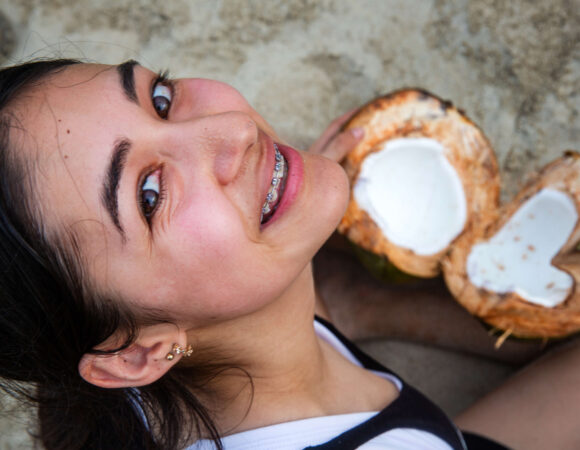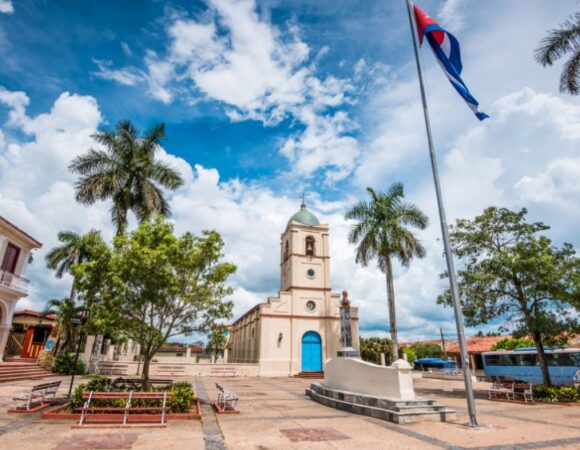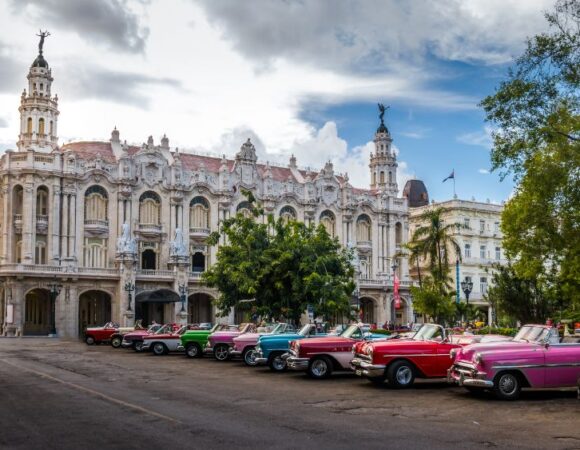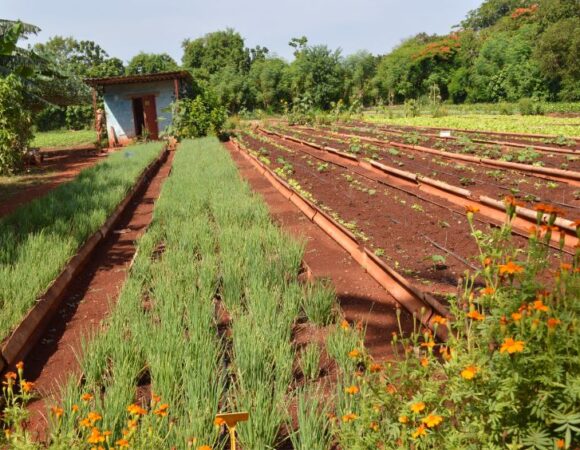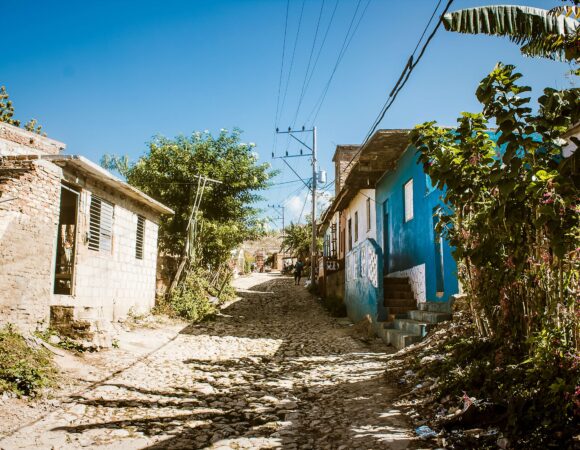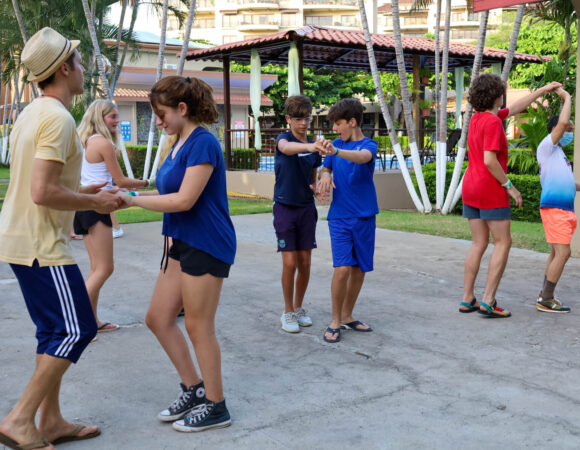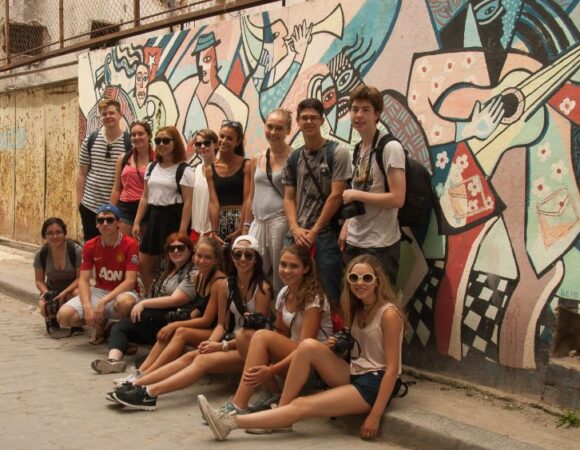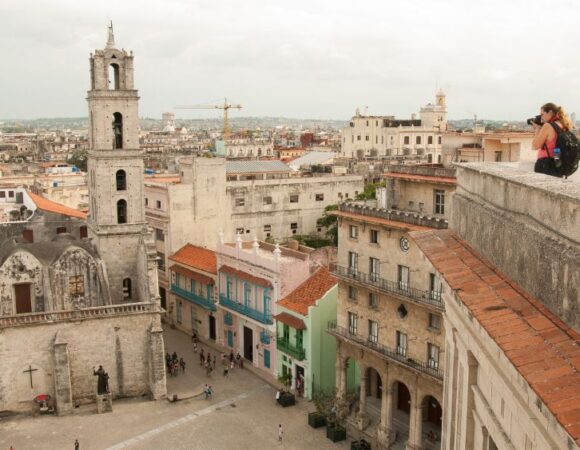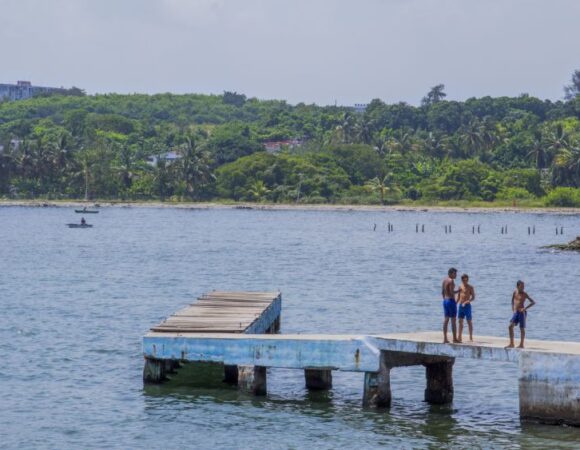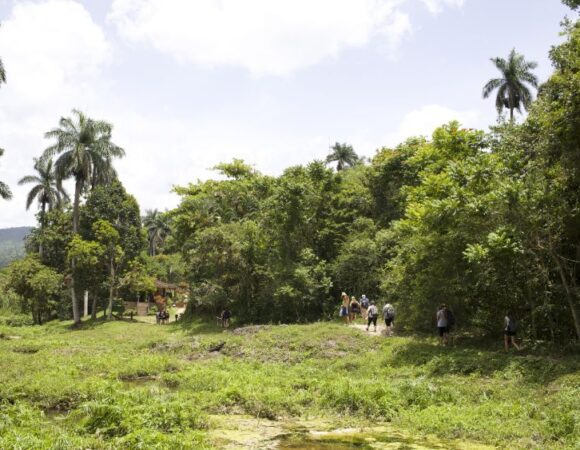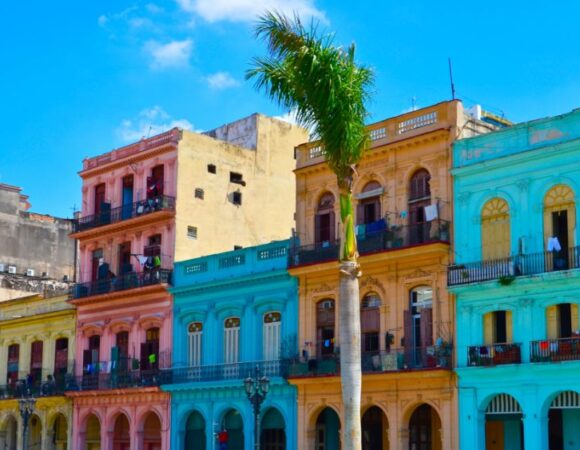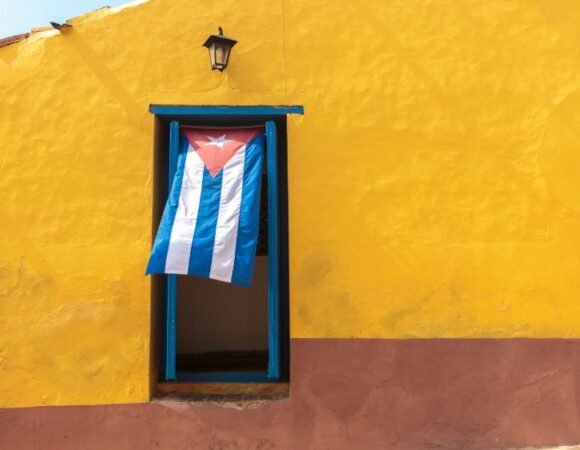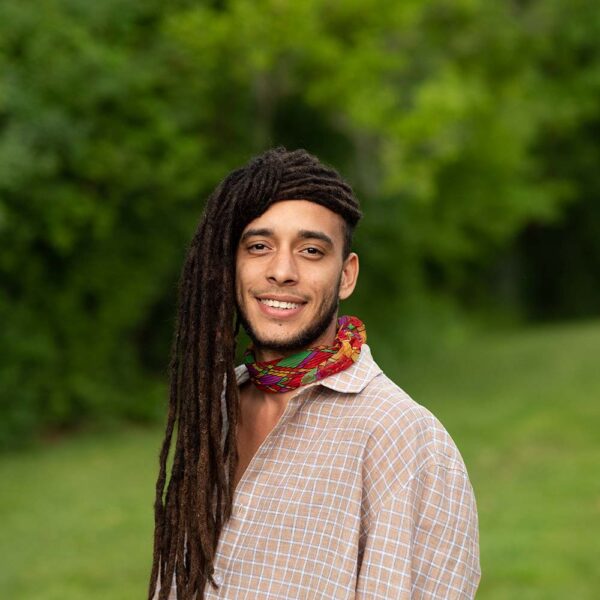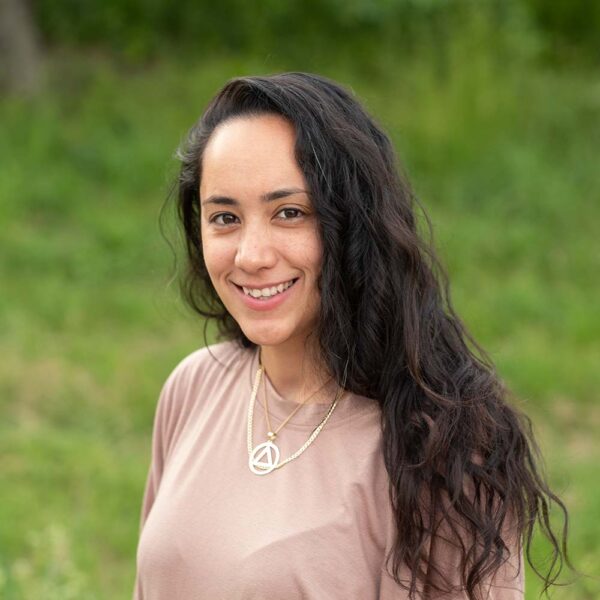Cuba
Arts & Rhythms in the Pearl of the Caribbean
Experience the vibrant culture and landscapes of Cuba this summer and engage with the island’s rich tapestry of dance, music, and visual arts. Explore a country where artistic expression flows through every street corner, dive into the rich agro-ecological traditions of the country, and explore its nature while snorkeling and trekking with local conservation experts in a national park. From the iconic Malecón in Havana to Viñales, and then to the lively streets of Trinidad, immerse yourself in the world of the arts, learning from professionals and gaining inspiration from their creativity.
- Highlights
• Visit historic sites and museums to learn about Cuba’s past
• Embark on art walks to explore galleries and street murals
• Learn to salsa dance in Old Havana’s vibrant dance studios
Itinerary
This itinerary represents our best projection of the group’s schedule. However, we may implement changes designed to improve the quality of the program.
Meet your fellow high school student travelers and one or more of your leaders in Miami, and fly together to Havana, Cuba. To learn more about how we organize travel, click here.
Begin in Havana with an in-depth orientation to get to know your peers and get acquainted with the city. Explore Havana’s vibrant neighborhoods, including the remarkably preserved colonial seat of Habana Vieja, the crowded streets and funky folk art alleyways of Centro Habana, and the elegant subdivided mansions. Walk around the Malecón and enjoy a welcome dinner at a local restaurant. Spend the next few days meeting with and learning from local artists, dancers, and musicians. Visit the Museum of Fine Arts, home to the best of Cuban art. Attend lectures and practical classes on Cuban music and rhythms. Participate in a dance workshop with a local professor, and explore what Cuban rhythms have to offer. Learn about the history of this fascinating country through visits to historical sites, and learn about Cuba’s impressive efforts towards universal health care and literacy.
Travel west to Las Terrazas, a community in the mountains designated by UNESCO as a Biosphere Reserve. Get the chance to experience rural Cuba, connect with nature, and learn from local ecological projects. Continue to the valley of Viñales—also known as “The Garden of Cuba” and home to a unique mesa limestone formation called a Mogote. Explore its caves by boat, go for short hikes, and visit an organic farm to learn about sustainable farming methods and local agro-ecological initiatives. Sketch, paint, or take photographs of the breathtaking scenery, and take a swim in the refreshing waters of the San Juan River.
On your way back to Havana, stop in Fusterlandia, an art and design project by the famous artist José Rodríguez Fuster, to admire the murals inspired by Caribbean culture. Once back in Havana, spend the next two days diving even deeper into art, music, and dance. Visit the High Arts School and learn from its fascinating architecture. Discuss and see examples of how art can change an entire neighborhood through mosaic art, graffiti, and mural expressions.
Travel west to Playa Larga, swim and snorkel over pristine coral heads, explore coastal mangroves, and reflect on your journey thus far. Trek in the area with specialists to learn about flora and fauna of the region. Head to Cienfuegos and explore the town’s unique and eclectic architecture, and familiarize yourself with paintings, photography, and engravings throughout the town’s streets. Continue your journey through Cuba’s interior to discover the colonial city of Trinidad, perched on the edge of the Sierra del Escambray Mountains overlooking the southern coast. Experience Cuba’s rhythms by attending a Rumba/Afro dance class and then support local artists on a visit to the craft market. Get outdoors to hike and explore the region’s gorgeous El Cubano National Park, including its beaches, waterfalls, and mountains, birds, and flora. Enjoy a final celebratory dinner to reflect on your adventures, present your independent project to your group and Cuban friends, and prepare to return to Havana.
Return to Havana, fly from Havana to Miami with your group and a leader, then continue on to your final destination. To learn more about how we organize travel, click here.
Itinerary
This itinerary represents our best projection of the group’s schedule. However, we may implement changes designed to improve the quality of the program.
Meet your fellow high school student travelers and one or more of your leaders in Miami, and fly together to Havana, Cuba. To learn more about how we organize travel, click here.
Begin in Havana with an in-depth orientation to get to know your peers and get acquainted with the city. Explore Havana’s vibrant neighborhoods, including the remarkably preserved colonial seat of Habana Vieja, the crowded streets and funky folk art alleyways of Centro Habana, and the elegant subdivided mansions. Walk around the Malecón and enjoy a welcome dinner at a local restaurant. Spend the next few days meeting with and learning from local artists, dancers, and musicians. Visit the Museum of Fine Arts, home to the best of Cuban art. Attend lectures and practical classes on Cuban music and rhythms. Participate in a dance workshop with a local professor, and explore what Cuban rhythms have to offer. Learn about the history of this fascinating country through visits to historical sites, and learn about Cuba’s impressive efforts towards universal health care and literacy.
Travel west to Las Terrazas, a community in the mountains designated by UNESCO as a Biosphere Reserve. Get the chance to experience rural Cuba, connect with nature, and learn from local ecological projects. Continue to the valley of Viñales—also known as “The Garden of Cuba” and home to a unique mesa limestone formation called a Mogote. Explore its caves by boat, go for short hikes, and visit an organic farm to learn about sustainable farming methods and local agro-ecological initiatives. Sketch, paint, or take photographs of the breathtaking scenery, and take a swim in the refreshing waters of the San Juan River.
On your way back to Havana, stop in Fusterlandia, an art and design project by the famous artist José Rodríguez Fuster, to admire the murals inspired by Caribbean culture. Once back in Havana, spend the next two days diving even deeper into art, music, and dance. Visit the High Arts School and learn from its fascinating architecture. Discuss and see examples of how art can change an entire neighborhood through mosaic art, graffiti, and mural expressions.
Travel west to Playa Larga, swim and snorkel over pristine coral heads, explore coastal mangroves, and reflect on your journey thus far. Trek in the area with specialists to learn about flora and fauna of the region. Head to Cienfuegos and explore the town’s unique and eclectic architecture, and familiarize yourself with paintings, photography, and engravings throughout the town’s streets. Continue your journey through Cuba’s interior to discover the colonial city of Trinidad, perched on the edge of the Sierra del Escambray Mountains overlooking the southern coast. Experience Cuba’s rhythms by attending a Rumba/Afro dance class and then support local artists on a visit to the craft market. Get outdoors to hike and explore the region’s gorgeous El Cubano National Park, including its beaches, waterfalls, and mountains, birds, and flora. Enjoy a final celebratory dinner to reflect on your adventures, present your independent project to your group and Cuban friends, and prepare to return to Havana.
Return to Havana, fly from Havana to Miami with your group and a leader, then continue on to your final destination. To learn more about how we organize travel, click here.
The largest island in the Caribbean Sea, Cuba captivates travelers with its vibrant blend of history and culture. The echoes of its colonial past resonate through the cobbled streets and colonial architecture of Havana, while the rhythmic beats of salsa and Afro-Cuban music infuse the air with energy. From its sandy beaches to its historic landmarks, Cuba beckons with a unique charm, promising an unforgettable journey through time and culture.
Spanish is the official language of Cuba.
Cuba has a tropical climate with two seasons: wet and dry. We visit during the wet season, when rain showers are common, but not a daily occurrence. It is hot and humid during the day—ranging from 80–90°F (27–32°C) most days—so the occasional rain shower is welcome.
Cuba’s cuisine is based on rice, beans, plantains, fish, and pork, as well as vegetables and tropical fruits. Many of the best meals can be found in paladares, independent government-sanctioned house-restaurants. Vegetarian options are widely available.
The largest island in the Caribbean Sea, Cuba captivates travelers with its vibrant blend of history and culture. The echoes of its colonial past resonate through the cobbled streets and colonial architecture of Havana, while the rhythmic beats of salsa and Afro-Cuban music infuse the air with energy. From its sandy beaches to its historic landmarks, Cuba beckons with a unique charm, promising an unforgettable journey through time and culture.
Spanish is the official language of Cuba.
Cuba has a tropical climate with two seasons: wet and dry. We visit during the wet season, when rain showers are common, but not a daily occurrence. It is hot and humid during the day—ranging from 80–90°F (27–32°C) most days—so the occasional rain shower is welcome.
Cuba’s cuisine is based on rice, beans, plantains, fish, and pork, as well as vegetables and tropical fruits. Many of the best meals can be found in paladares, independent government-sanctioned house-restaurants. Vegetarian options are widely available.
What to Expect
Review specific program expectations here. For more general information:
To learn more about our Exploration programs click here.
Proficiency in Spanish is not required. However, if you speak or study Spanish in school you will have opportunities to use it while communicating with local people. If you don’t speak Spanish you will have the opportunity to learn some basic language skills.
Pursue an independent project and explore an aspect of local culture of particular interest to you—become an expert on an artist’s most famous pieces, create a recipe book with traditional Cuban recipes, or learn a traditional song.
This is a physically active summer travel program. Movement is a part of daily activities, whether walking the streets of Havana, dancing, or hiking. On excursions there will be opportunities to hike, swim, snorkel, and more. You do not need to be at peak fitness to participate, but it is important that you have a desire to be physically active, and that you are excited about trying all activities.
Living accommodations in Cuba are simple. In Havana, we stay at a hotel in mostly double and triple rooms, each air-conditioned, with private bathrooms. In other locations along our journey, we stay in a combination of private bed and breakfasts hosted by Cuban families, and simple, clean bungalows where students share a room with other students in the group. Leaders reside together with the students throughout the program.
We begin each day with a traditional Cuban desayuno at our residence or with our Cuban hosts. For lunches and dinners, we often find small house-restaurants, called paladares, or hit the markets to purchase food for a picnic.
What to Expect
Review specific program expectations here. For more general information:
To learn more about our Exploration programs click here.
Proficiency in Spanish is not required. However, if you speak or study Spanish in school you will have opportunities to use it while communicating with local people. If you don’t speak Spanish you will have the opportunity to learn some basic language skills.
Pursue an independent project and explore an aspect of local culture of particular interest to you—become an expert on an artist’s most famous pieces, create a recipe book with traditional Cuban recipes, or learn a traditional song.
This is a physically active summer travel program. Movement is a part of daily activities, whether walking the streets of Havana, dancing, or hiking. On excursions there will be opportunities to hike, swim, snorkel, and more. You do not need to be at peak fitness to participate, but it is important that you have a desire to be physically active, and that you are excited about trying all activities.
Living accommodations in Cuba are simple. In Havana, we stay at a hotel in mostly double and triple rooms, each air-conditioned, with private bathrooms. In other locations along our journey, we stay in a combination of private bed and breakfasts hosted by Cuban families, and simple, clean bungalows where students share a room with other students in the group. Leaders reside together with the students throughout the program.
We begin each day with a traditional Cuban desayuno at our residence or with our Cuban hosts. For lunches and dinners, we often find small house-restaurants, called paladares, or hit the markets to purchase food for a picnic.
A Day in the Life: Havana
- Morning
- Afternoon
- Evening
A Day in the Life:
Havana
- Morning
- Afternoon
- Evening
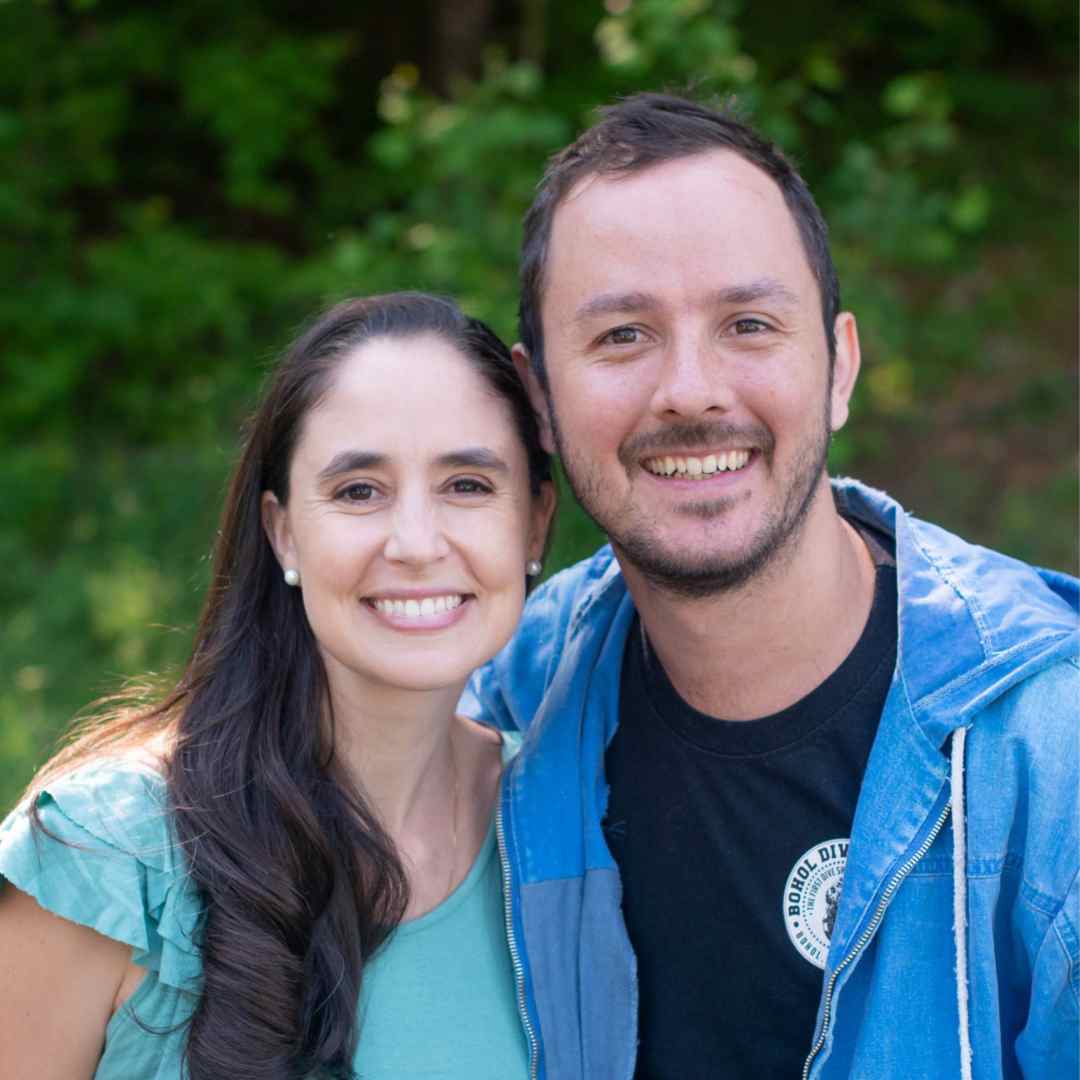
This Program is Directed by
Juliana Gutierrez & Gregorio Rojas
If you have questions or would like to talk further about this program, please get in touch!

This Program is Directed by
Juliana Gutierrez & Gregorio Rojas
If you have questions or would like to talk further about this program, please get in touch!



